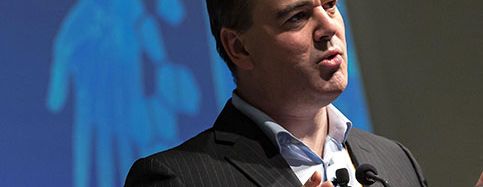16th EAUN Meeting: education, cooperation and exchange among urology nurses

Madrid welcomed around 300 urology nurses from Europe and around the world for the very successful 16th EAUN meeting. The EAU sat down with EAUN Chair Lawrence Drudge-Coates (GB), who shared his views on the meeting, the challenges faced by urology nurses, and the way forward for the EAUN.
This has been the most international meeting of the EAUN to date, with delegates from Japan, Qatar, Oman, and Australia, among others. “This shows what impact the EAUN has not only within Europe but also internationally, it is a reflection not only of who we are as an organisation, but also the influence of the work and how far reaching that influence is,” said Drudge-Coates. The EAUN is relatively young in real terms, compared to others. Nevertheless, the meeting is proving to be highly influential, and attracts interested and engaged delegates each year.
This is not without challenges, because there are differences in language, in training, in educational needs for each country, and in some countries urology nursing as a speciality is not recognised. However, the EAUN believes that it should provide education across the broadest field of nurses possible, through providing evidence-based presentations that are important for urology nurses and which will “inspire them to look at their own practice in a different way, inspire their colleagues, and improve patient care outcomes.”
A varied, evidence-based programme
Topics change every year, and always try to reflect what is current in nursing practice, and most importantly reflect what our members want. One of the aims is to achieve “core education frameworks for urology nurses in Europe”. Another important measure is the presentation of the EAUN clinical guidelines. “These evidence-based guidelines provide urology nurses with the tools to optimise patient care, through evidenced based practice, and help to standardise practice. So I think what we are trying to do is translate those guidelines into every day clinical practice and get not only urology nurses to use them,” reflected Drudge-Coates. “We are immensely proud of what we have achieved and as a result of our robust guidelines, they are being used worldwide”
The delegates and the programme reflect the changing mood in urology nursing. The board of the EAUN seeks to serve its members, and to produce the programme, they listen to what members say, to get relevant presentations on the most current scientific development, with a strong research focus. In terms of scientific content, there were very topical presentations on gender, men’s health, and of course the critical issue of catheterisation.
The annual conference is seen as the beginning of a journeyof education for urology nurses “Really it is about trying to make sure that we keep ahead of the game, keep things current, interesting, vibrant.” Yet the most important thing is that nurses go back to their own practice and transfer that knowledge and inspiration to other nurses, and get them to see the importance of attending meetings if possible.
A multi-professional approach
There is continuous engagement with the EAU, because while they may be different organisations, Drudge-Coates believes that they have a common goal: “At the end of the day, it’s a multi-professional approach to care that benefits patients most, and improves their outcomes. We want urologists to think more critically about the role of their nurses and how they can enhance patient care by developing their nursing colleagues”
Finally, education is critical. And all countries have a common need for education, but it is also true that there are specific needs within each country. Nevertheless, concluded Drudge-Coates: “we might be divided by language, by cultures, but in terms of patient care the endpoints are the same”

